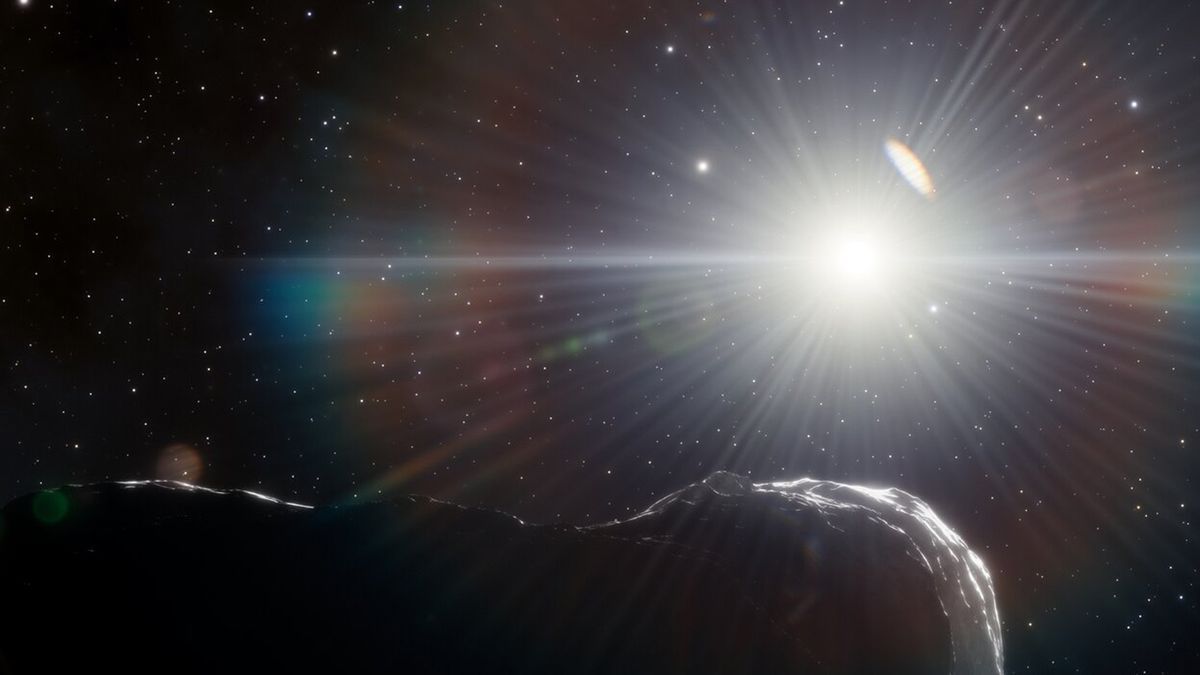Scientists are thinking about how to protect the Earth from a dangerous asteroid. The best way to do this is to track in advance. However, space rocks can hide in the rays of the Sun.

Dangerous asteroids around us
Scientists continue to worry about the danger of an asteroid colliding with the Earth. What this could lead to was clearly demonstrated by the events in Chelyabinsk in 2013. Then the explosion of a space rock at an altitude of 22 km above the Earth caused damage to 7,000 houses and injured more than 1,600 people.
And that rock was only 20 m in diameter. Such occur with the Earth once in 50–100 years, large ones are less common. But then, in 2013, no observatory noticed it, because it was flying from the direction of the Sun, which did not allow tracking it.
In general, asteroids arriving from the vicinity of the Solar System account for only a small proportion of all approaches to the planet. Most of them happen to objects that are somewhere nearby all the time.
Some of them belong to the Apollo group. These celestial rocks cross the orbit of our planet from the outside, most of it lies further from the Sun than the Earth. The asteroids of the Aten group, which are approaching us from the direction of the luminary, are much more dangerous. They are the most difficult to see.
Dangerous neighbours
In general, scientists can track a near-Earth asteroid for a long enough time, and they will be able to determine the danger of a collision for many decades to come. The only problem is to find it. Scientists have found about 33 thousand similar objects, but they say that this is most likely only 40 percent of the total.
Most of those near-Earth asteroids that we don’t know anything about are actually small. Their diameter is only a few metres. However, there are at least a few dozen that reach hundreds of metres, and a few more kilometres across.
One of these — 2022 AP7 — was opened last year. It rotates with a period of 5 years and hides behind the Sun most of the time. Therefore, it is almost impossible to notice it, but it does not approach our planet either. However, its orbit is evolving, and everything can change.
How to see an asteroid
Spotting a dangerous asteroid is a double problem. On the one hand, when it approaches from the Sun, it blinds, and when it is far from the luminary, the illumination may be insufficient.
The way out of the situation can be an infrared space telescope that sees even unlit objects. But now only NEOWISE operates from such missions. It was launched back in the 2000s just as WISE, it performed many important scientific tasks and was taken out of use. But after the Chelyabinsk events, it was put back into operation.

The only problem is that this telescope cannot look at the Sun either, but it can search for asteroids hiding in the dark. The problem can be solved by two vehicles that are only planned for launch: NASA NEO Surveyor in 2027, and NEOMIR — not earlier than 2030.
Both spacecraft will be equipped with infrared detectors and high solar curtains that will allow them to search for asteroids very close to sunlight, and both will rotate at the first Lagrange point (L₁) between the Earth and the Sun, where the gravitational attraction of the two objects is balanced.
NEO Surveyor will perform a full sky scan every two weeks, evenly distributing the focus between the dawn and dusk sides of the Sun. It is expected that the telescope will mainly discover near-Earth objects with a width of 50 to 100 m.
Meanwhile, NEOMIR will complement the NEO Surveyor by scanning the ring-shaped region around the Sun approximately every six hours. Thanks to this, even very small rocks will be noticed long before they get close to the Earth.
According to www.space.com
Follow us on Twitter to get the most interesting space news in time
https://twitter.com/ust_magazine


